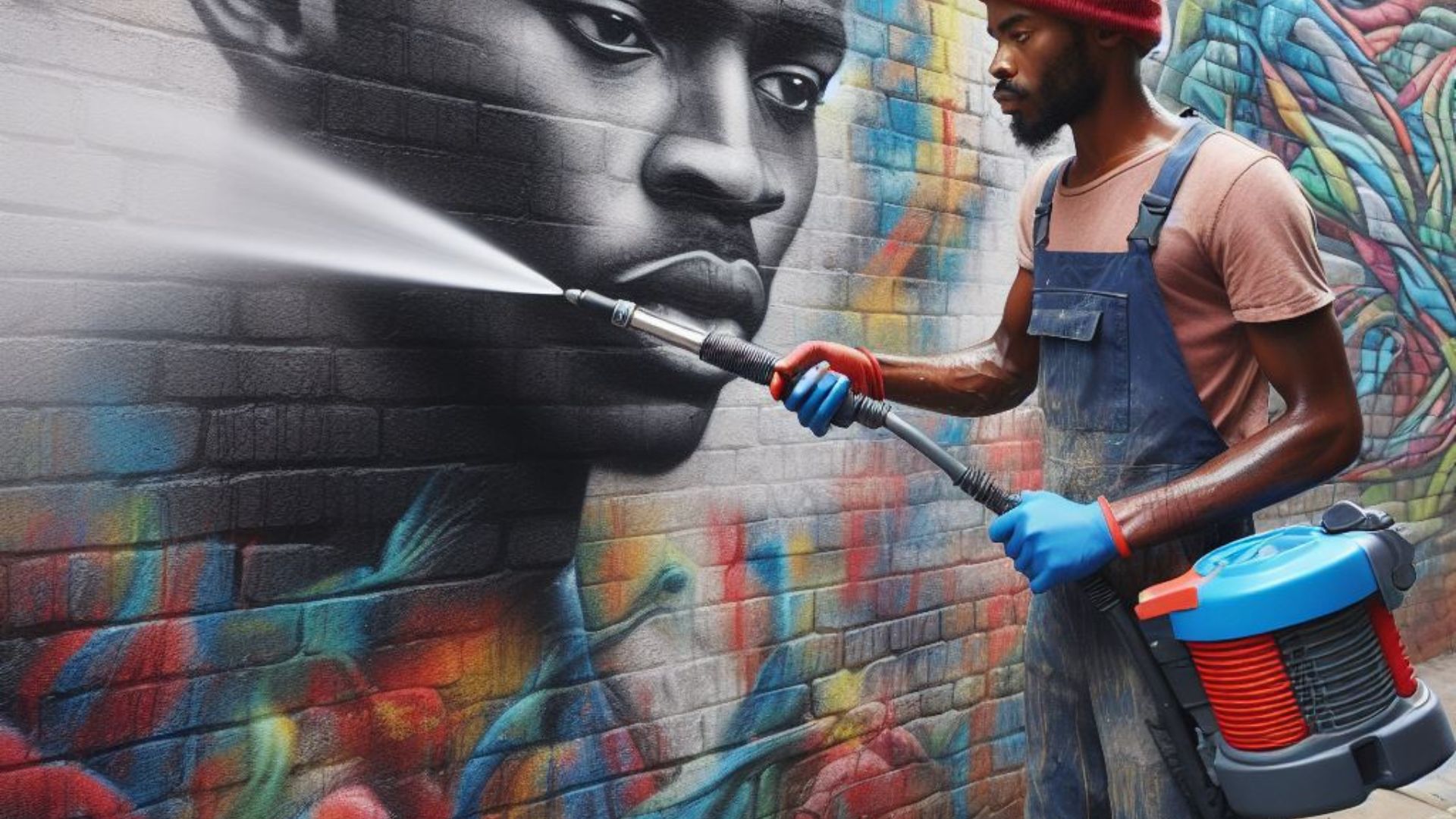Cinder blocks, with their rough texture, can be a fantastic canvas for adding color and personality to indoor and outdoor spaces. However, getting them ready for a fresh coat of paint requires some preparation to ensure a smooth and lasting finish. Here’s a comprehensive guide on how to prepare a cinder block surface before painting:
1. Clean the Surface
Before anything else, thoroughly clean the cinder block surface. Use a stiff-bristled brush, soap, and water to remove dirt, dust, and any debris. Rinse it off and let it dry completely.
2. Repair Any Damage
Inspect the surface for cracks or holes. Patch them using a concrete patching compound or mortar mix. Allow it to dry as per the product’s instructions.
3. Smooth Out Imperfections
Cinder blocks can have uneven surfaces. To create a smoother finish, apply a coat of concrete filler or primer designed to fill pores and level the surface. This helps the paint adhere better.
4. Prime the Surface
Applying a coat of primer specifically formulated for masonry surfaces is crucial. This prepares the surface for the paint, enhances adhesion, and ensures the color appears more vibrant.
5. Choose High-Quality Paint
Opt for acrylic latex paint or elastomeric paint, specially formulated for masonry surfaces. These paints are durable and weather-resistant, ideal for cinder blocks.
6. Apply the Paint
Use a roller or brush to apply the paint evenly. Start with a thin coat and let it dry completely before applying subsequent coats. Follow the paint manufacturer’s instructions for drying times between coats.

7. Seal the Surface (Optional)
Consider applying a clear masonry sealer over the painted surface for added protection against moisture and wear, especially for outdoor applications.
Following these steps ensures your cinder block surface is well-prepared for painting, resulting in a beautifully finished project that stands the test of time. With proper preparation and the right materials, your painted cinder block surface can become a stunning addition to any space
Tips for a Flawless Finish:
Adequate Drying Time:
Be patient between coats. Rushing the drying process can compromise the paint’s adherence and finish. Follow the recommended drying times before applying additional coats.
Weather Consideration:
If painting outdoors, choose a day with mild temperatures and low humidity. Avoid painting in direct sunlight or when rain is expected, as these conditions can affect the paint’s application and drying process.
Proper Ventilation:
Ensure proper ventilation when working with paint and primers. If indoors, open windows or use fans to promote airflow and aid in the drying process.
Protective Gear:
Wear appropriate protective gear, such as gloves and goggles, when handling cleaning agents, concrete fillers, primers, and paint.
Test a Small Area:
Before painting the entire surface, test a small, inconspicuous area to ensure the paint adheres well and achieves the desired finish.
Maintenance:
Regularly inspect the painted surface for any signs of wear or damage. Touch up areas as needed to maintain the paint’s integrity over time.
Cleanup:
Clean brushes, rollers, and any other tools immediately after use to prolong their lifespan and ensure optimal performance for future projects.
Final Thoughts:
Preparing a cinder block surface for painting requires attention to detail and the right materials. By following these steps and tips, you can transform a dull cinder block wall or surface into a visually appealing and durable element of your space.
Remember, proper preparation is key to achieving a professional-looking finish that lasts. With patience and the right techniques, painting cinder blocks can be a rewarding DIY project that adds character and charm to your surroundings.
So, gather your materials, prepare the surface meticulously, and let your creativity shine as you paint your cinder block surface into a work of art
Comparison tabular
| Preparing Cinder Block Surface | Painting the Surface |
|---|---|
| Clean the surface thoroughly | Use high-quality acrylic latex or elastomeric paint |
| Repair any damage with concrete patching compound | Apply primer specifically formulated for masonry surfaces |
| Smooth out imperfections with concrete filler | Apply multiple thin coats of paint, allowing each coat to dry completely |
| Apply a coat of primer for better adhesion | Consider using a clear masonry sealer for added protection |
| Choose appropriate weather conditions for painting | Properly ventilate the area during painting |
| Allow adequate drying time between steps | Use proper protective gear while handling materials |
| Consider applying a clear sealer for protection | Regularly inspect and touch up the painted surface as needed |
This comparison table encapsulates the primary steps involved in both preparing a cinder block surface for painting and the actual painting process itself, emphasizing the importance of each step for a successful and lasting finish.
Wrapping up
As you embark on transforming your cinder block surfaces into vibrant, eye-catching elements, remember that the key to a stunning finish lies in meticulous preparation and careful execution.
By diligently following the steps outlined for surface preparation and painting, you’re not just enhancing the appearance of these blocks; you’re also ensuring durability and longevity for your painted surfaces.
So, gather your supplies, take your time with each step, and enjoy the creative process! With patience and attention to detail, you’ll soon have beautifully painted cinder block surfaces that elevate the aesthetics of your space.
Happy painting!

For over a decade, I’ve been Mike, an artist, crafter, and designer deeply immersed in the Croc world. I thrive on crafting unique, size-inclusive patterns, fostering creativity, and sharing them on ktforum.com. My designs aim to ignite your creative spark and delight you, ensuring clarity and ease of use through rigorous testing. Join me in expressing your creative flair and showcasing your craft with joy.
Related Posts
- Painting Cinder Block Walls: Do You Need Primer
Cinder block walls offer durability and strength, but when it comes to adding color or…
- Cleaning Cinder Block Walls Before Painting: A Comprehensive Guide
Painting a cinder block wall can transform its look and elevate the aesthetics of your…
- Power Washing Before Painting Cinder Block Walls: A Crucial Step
Preparing your cinder block wall before painting is key to achieving a successful and long-lasting…
- The Role of Sealer Before Painting Cinder Block Walls
When considering painting cinder block walls, the question often arises: is applying a sealer before…

